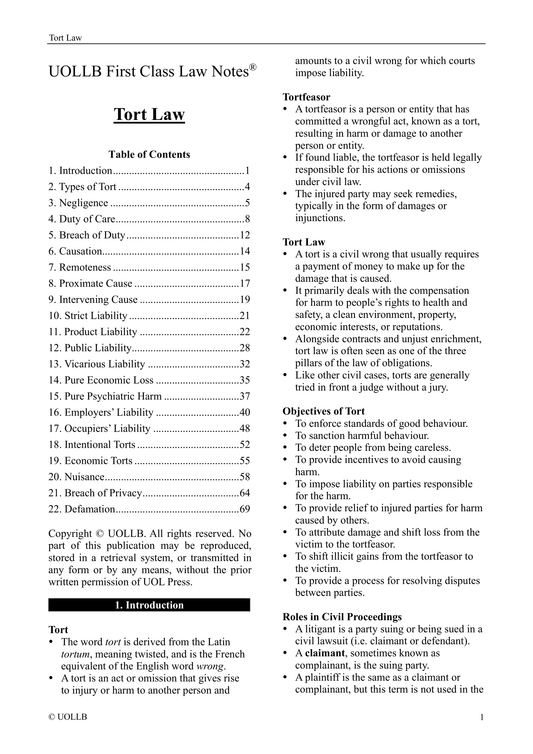Elements of Tort
Share
Tort law is a branch of civil law that deals with civil wrongs that result in harm or injury to a person, property or reputation of an individual, which can lead to compensation or damages. There are several elements that must be present in order for a claimant to establish a successful tort claim. These elements may vary depending on the specific type of tort, but generally, the following elements are required:
Duty of Care
The defendant must owe a duty of care to the claimant. This means that the defendant must have a legal obligation to take reasonable care to avoid causing harm to the claimant.
Breach of Duty
The defendant must have breached their duty of care. This means that they failed to take reasonable care to avoid causing harm to the claimant.
Causation
The defendant's breach of duty must have caused the harm or injury suffered by the claimant. The harm must have been a direct result of the defendant's actions.
Damage or Loss
The claimant must have suffered actual damage or loss as a result of the harm caused by the defendant's actions. This can include physical injury, damage to property, loss of income, or damage to reputation.
In addition to these general elements, some types of torts may have additional specific elements that need to be satisfied, such as intent or malice in intentional torts, or strict liability in certain types of product liability cases.
Duty of Care
The defendant must owe a duty of care to the claimant. This means that the defendant must have a legal obligation to take reasonable care to avoid causing harm to the claimant.
Breach of Duty
The defendant must have breached their duty of care. This means that they failed to take reasonable care to avoid causing harm to the claimant.
Causation
The defendant's breach of duty must have caused the harm or injury suffered by the claimant. The harm must have been a direct result of the defendant's actions.
Damage or Loss
The claimant must have suffered actual damage or loss as a result of the harm caused by the defendant's actions. This can include physical injury, damage to property, loss of income, or damage to reputation.
In addition to these general elements, some types of torts may have additional specific elements that need to be satisfied, such as intent or malice in intentional torts, or strict liability in certain types of product liability cases.




























































